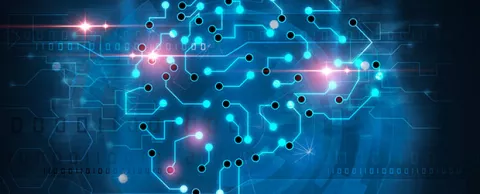
Artificial intelligence (AI) is no longer confined to the realm of science fiction. It’s becoming reality, already playing a role in transforming some corporate call centers. But as the technology grows, it could also radically shape the way that cities provide services and determine policy.
At Smart Cities Week Silicon Valley, three experts shared their visions of what AI could do for cities. The visions are inspiring. If they come to life, tomorrow’s cities will have a new tool to make life easier for residents and to prevent unintended consequences from policy decisions. This is what the future could look like. — Kevin Ebi
1. Avoid unintended policy consequences
Policies start out with good intentions, but they can end up hurting the very people they were supposed to help. Here’s one scenario:
You want to improve the quality of life for under-served people in a poor neighborhood. So you bring in a new technology to make the neighborhood better. But makes the neighborhood more attractive, bringing in new residents and driving up rents and property values. Soon the very people you aimed to help can no longer afford to live there.
Ted Lehr, Austin’s data architect, envisions a day when AI leads to smart models that let policy makers see all the possible impacts of decisions — impacts they may not even be aware of today.
“No parent should give their children what they want all the time,” Lehr said. “Cities shouldn’t do that for their citizens either. Perhaps we could be using AI to detect if a plan is prejudicial.”
Or make roads safer. Lehr said that traffic planners have always been able to assume that pedestrians wouldn’t just randomly wander out into a road. With people glued to their smartphones, that’s no longer a safe assumption. AI could one day lead to better traffic safety models.
2. Anticipate citizens’ needs
One industry where AI is beginning to take off is call centers. Each day, computers are becoming better able to understand speech, even if the person speaking has a thick accent.
Companies are obviously interested in that technology as a way of cutting costs. In fact, some forecast that call centers will be largely automated by 2020.
But cities could also leverage the technology to better serve people. People sometimes have requests that involve many different city departments. Getting a building permit. Opening a restaurant. Michelle Rudnicki, IBM’s vice president of Industry Solutions, says AI could pave the way to bringing all city departments together. It could enable advanced call centers that understand what the person is trying to do and to connect all the dots for them, eliminating frustration and wasted time.
3. Improve real-time insight
Planning a trip is certainly easier than it’s ever been. In any major city, you can see the current traffic conditions and build a route that will get you there in the shortest possible time. But Chetan Gupta, Hitachi’s chief data scientist, says those services could be even smarter with AI.
Gupta says the issue is that today’s services are based on what the traffic sensors are seeing right this second, historical data, or some combination of the two. But what if they could see what else was going on in the city and make smarter forecasts about what traffic would be like? AI could one day allow them to do that. For example, they could take sports or concert schedules into account to provide much more accurate forecasts about when you should leave or what methods of transportation you should take to get there.
Additionally, AI could also improve the usefulness of data from sensors. AI paired with video feeds, for instance, would let transit managers better understand how many people are waiting in the bus or subway queue.
4. Always put people first
AI scares some people given the way that it has been portrayed in the movies. But this isn’t about letting computers take over the world. AI is about letting computers be much smarter about the data they analyze and the way they analyze it. And the value is in how it makes people’s lives better.
Rudnicki says let the computers do the heavy lifting, but make sure that people are involved in interpreting and using the results.
“You have to insert a human into it so that it can be used responsibility,” she says. “To serve up better answers look at the data, come up with answers from the data, but hand them off to a human being to where there’s an ability to apply reason and human values to that data.”



